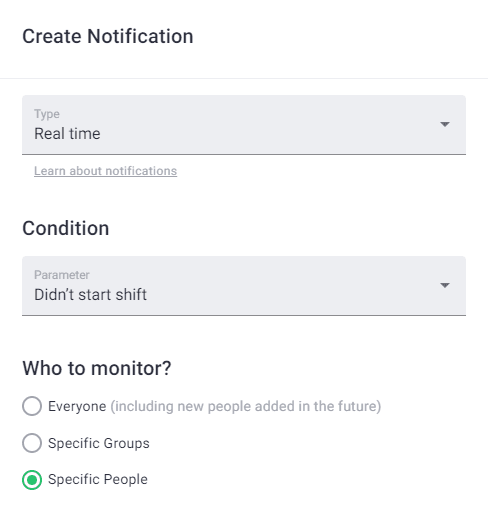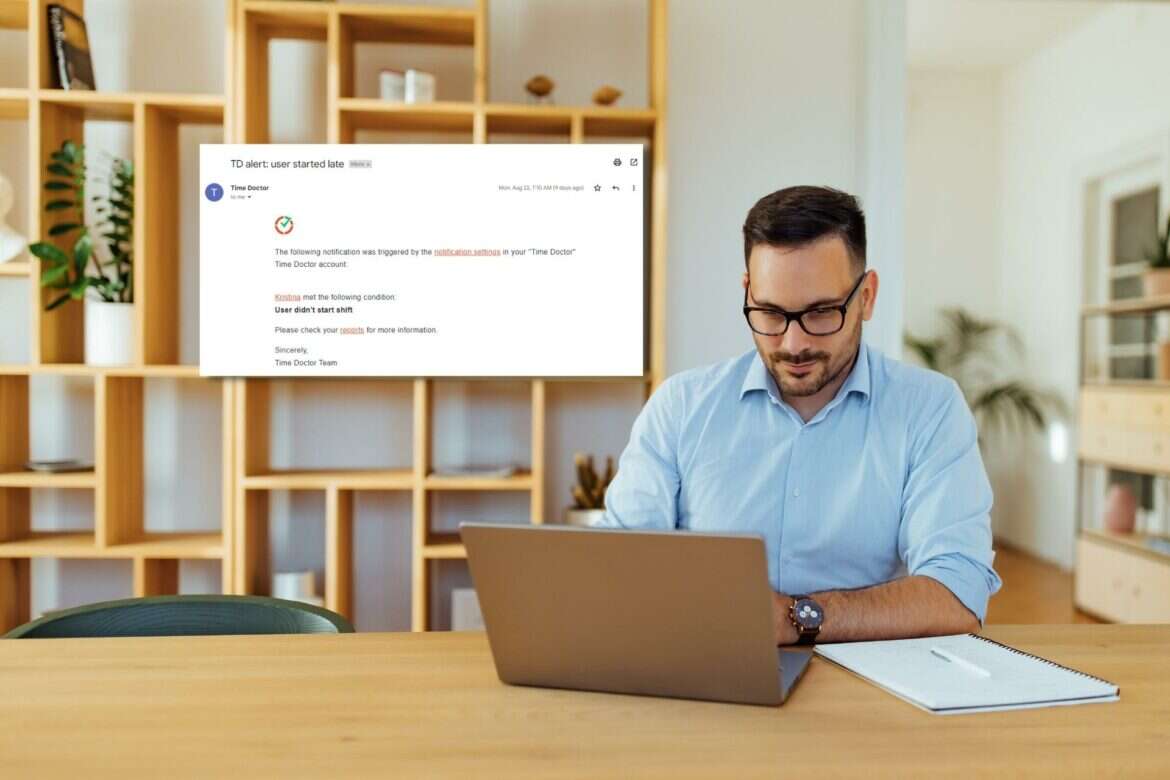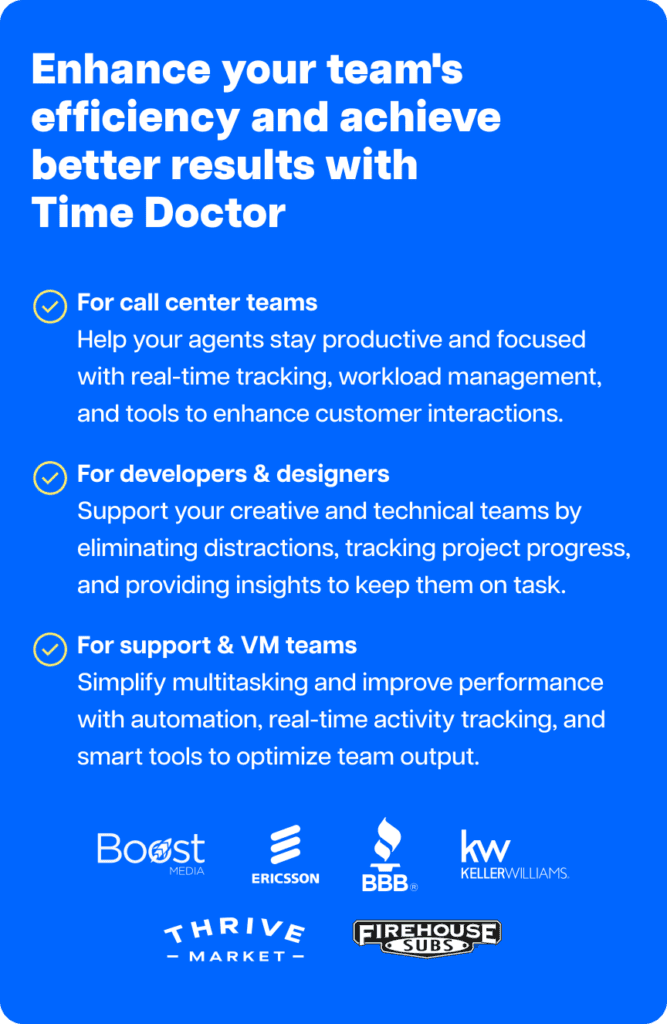Having attendance insights to review at the end of the day is useful for compliance, allocating human resources wisely, and keeping your team accountable — no matter where or when they work. But knowing when people are actively working or not working can also be critical for moment-to-moment management of your operations and service delivery.
If you have resource-dependent commitments or time-sensitive deadlines — you need to know right away if employees aren’t available, so you can take action to deal with understaffing or shortfalls in meeting client expectations.
That’s why Time Doctor has released real-time email notifications, which can alert managers when:
- Employees don’t start on time or miss the start of a scheduled shift.
- Employees add manual time — so ad hoc changes to attendance records can be verified by a manager in a timely way.
How does real time visibility of attendance help you succeed?
Smart companies are moving towards systems that empower people to manage their own time and outputs, based on clear expectations and values. Modern leaders aren’t typically watching employees’ every move, even when work happens on-site. Real time alerts help managers stay abreast of important issues without the need to micromanage.
Take business process outsourcing (BPO) companies for example: team members may work in an office, remotely or a mix of both, across various set schedules or start times. Team leaders within a customer service BPO won’t always know when agents arrive or start working.
However, BPOs often guarantee a certain level of service or staff coverage over specific periods, and need to be able to deliver on these promises to attract, retain and grow their client base.
The danger of people showing up late, or not showing at all, is that problems might only come to light via a client complaint — because the client’s needs weren’t met adequately. Perhaps call volume spiked, but not enough agents were on hand to respond.
Instant alerts about late arrivals or people not starting shifts on time helps BPOs:
- Discourage lateness and absenteeism, and drive increased dependability and productivity.
- Proactively catch unexpected gaps in capacity so resources can be re-deployed or clients can be advised.
- Stay focused on service quality to maintain the trust and loyalty of your clients.

Real-time alerts augment Time Doctor’s customizable email notifications
This latest release strengthens our email notifications features that help managers spend less time monitoring and more time on what’s important.
Email notifications include a range of different trigger options that can be customized based on your specific conditions, and named in ways that make sense to you. For instance, you can use notifications to get daily emails about:
- Performance issues like team members that surpass a threshold (set by you) of unproductive time, or when activity levels are lower than average.
- Attendance tracking including a summary of who was late, worked too few or too many hours, didn’t follow their schedule, or had consecutive absences.
- When manual and mobile time are added by employees, enabling supervisors to stay informed of the reasons people are adjusting their attendance records.
How to create a real time email notification?
On the Time Doctor web app, navigate to ‘Settings / Email Notifications’ to get started.
When you create a new notification, you’ll have the option to change the ‘Type’ to ‘Real time’, and then choose from one of three conditions:
1. Didn’t start shift
For Time Doctor users who’ve set up work schedules, this alert is sent if an employee hasn’t started work by 5 minutes past the shift start time. That allows team leaders to find someone to cover a shift without delay.

2. Didn’t start working
When you don’t have set schedules, but you do have clearly defined start times (e.g. 9am), you can use the ‘Didn’t start working’ condition to be alerted to late-comers based on your specific parameters. You can create multiple alerts for teams with different start times, in different time zones, or who work across different days of the week.

3. User added manual time
You can now be instantly prompted to review manual time allocated by team members, to limit the risk of people adding manual time for activities not performed. A delay between the entry being made and being verified makes it hard for busy managers to check that the activity stated in a manual time entry actually happened—real time alerts reduce instances where approving manual entries rests on the managers’ memory.

Like all email notifications, when you create a real-time alert you can choose who you want to monitor: everyone in the company; specific groups; or select individual users.
Real-time email notifications help leaders spot and solve pressing issues, but they also support automated attendance management, schedule optimization, and a more complete view of factors influencing employee engagement and performance.
If you’re not already using Time Doctor but want to benefit from real-time visibility of who’s working and how poor attendance is impacting your business, sign up for our free 14-Day trial today.
Amy Owens is a product marketing enthusiast with a passion for writing content that communicates the features, values, and benefits of products.


